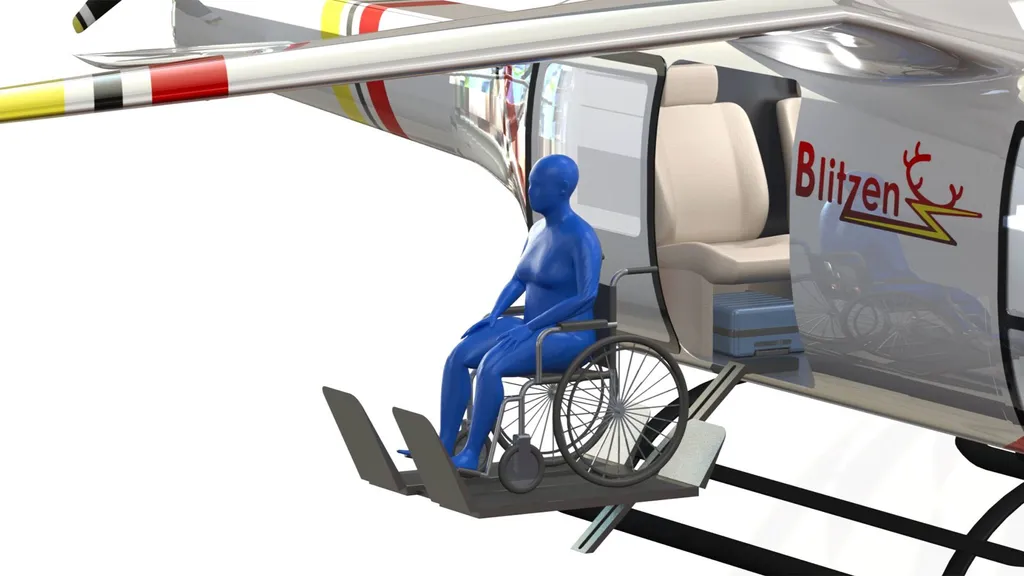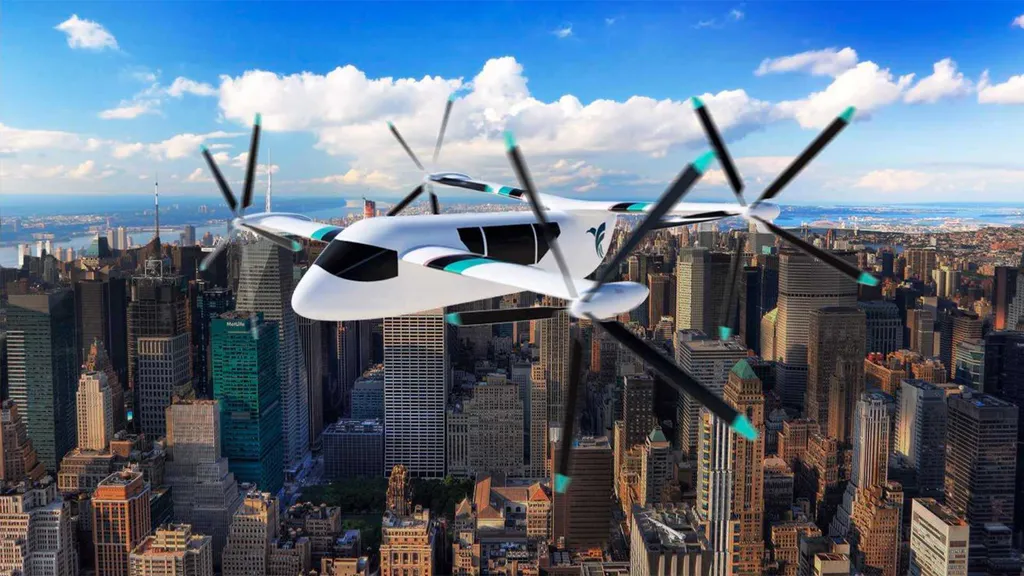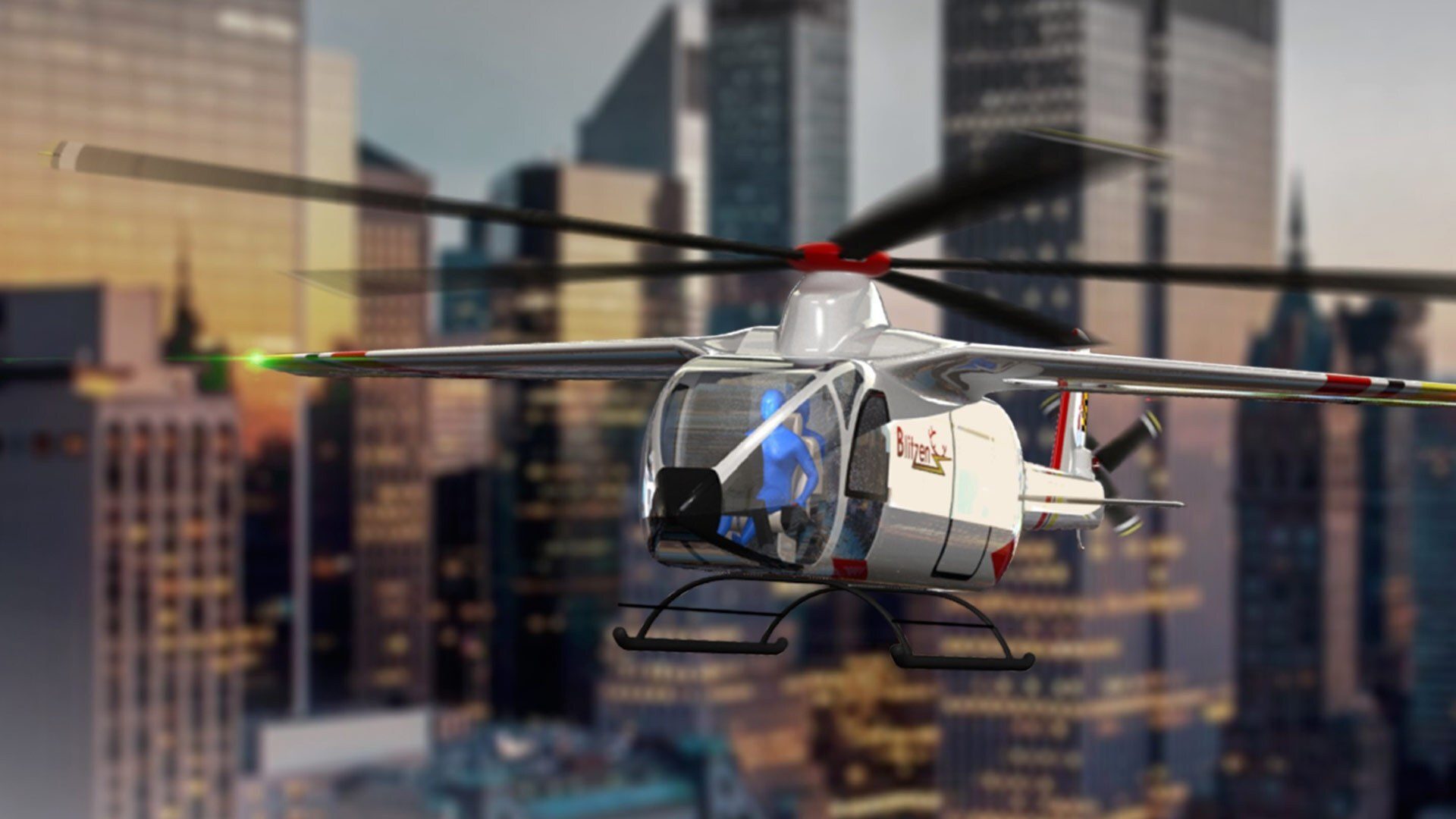- September 23, 2022
- By Joanna Avery
A University of Maryland team of engineering seniors won an international competition for its design of a highly efficient electric helicopter that would whisk passengers with physical disabilities above the scrum of road traffic.
The “Blitzen” concept, inspired by the German word blitz (“lightning”) as well as the name of the mythical flying reindeer, took first place in the Vertical Flight Society’s Student Design Competition’s undergraduate category. A second entry, “Starling,” an accessible air taxi with acoustics that blend with soundscapes, placed second in the graduate category. The university’s aerospace engineering teams consistently excel in this contest.
“It took a lot of work as a team to make a fairly thorough conceptual design from the ground up, but the effort was definitely worth it,” said Samuel Allgaier ’22, a member of the winning undergraduate team. “Seeing all of our work come together in the final design was even more rewarding than I could have imagined.”
The 39th annual competition, sponsored by Bell Textron, asked teams to create an all-electric vertical takeoff and landing vehicle that would accommodate passengers with reduced mobility. Fourteen academic teams from four countries submitted proposals; both of Maryland’s teams designed helicopters for one pilot and four-able-bodied passengers or two passengers with reduced mobility.

The UMD undergraduate team was advised by Professor Inderjit Chopra, Professor James Bader and Senior Research Scientist VT Nagaraj and comprised 10 students who enrolled in a two-semester course on engineering and designing rotorcraft vehicles.
Vivek Uppoor ’22, undergraduate team captain, said the semester of coursework flew by, and the design process was rigorous but rewarding.
“We all realized that we had an important role to play in designing the helicopter, and we combined our knowledge and designs to develop an effective vehicle for this year’s challenge,” he said. “I thought it was really cool to work with everybody. It’s been an amazing experience.”

The Blitzen design puts safety and comfort at the forefront of its single main rotor vehicle. Its spacious cabin provides disability accommodations, including wheelchair accessibility, storage for large medical devices and resources for those with impaired hearing.
The Starling design, named for the songbird, produces less noise and features a wide sliding door to ease movement of wheelchairs and a modular cabin to support any special needs.
The undergraduate team was awarded $3,000, and two team members were invited to attend the Vertical Flight Society’s 79th annual Forum and Technology Display in May.
